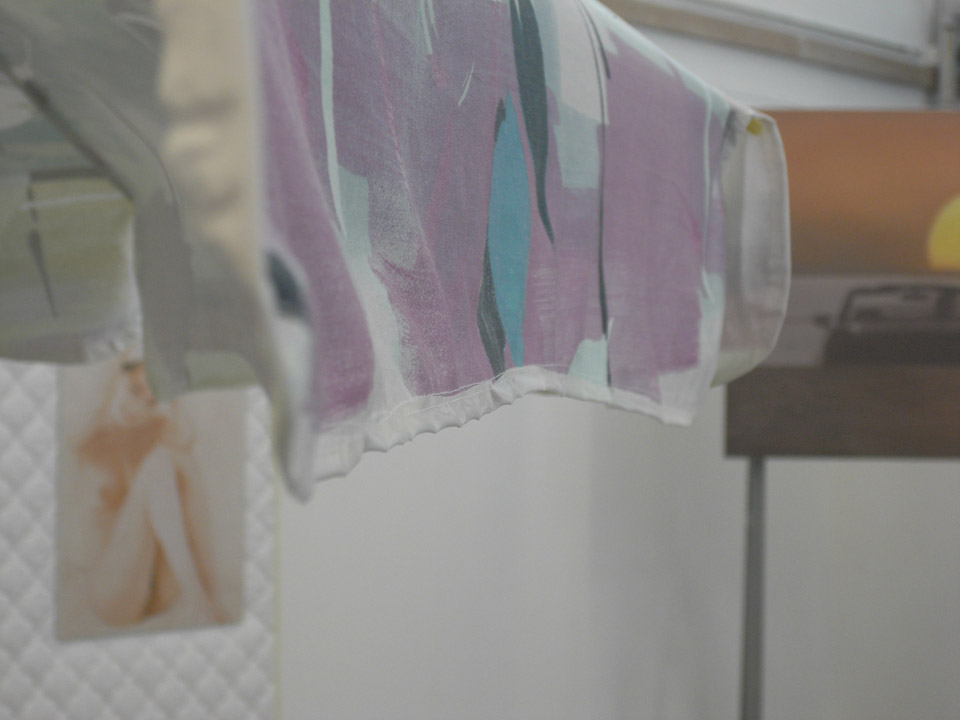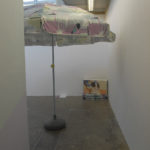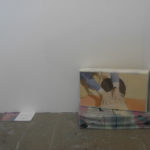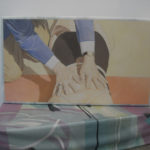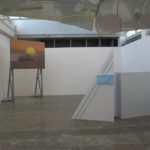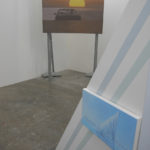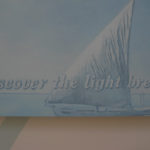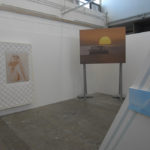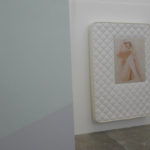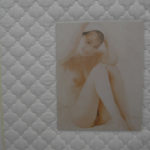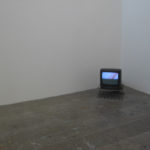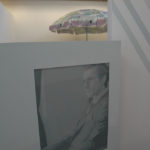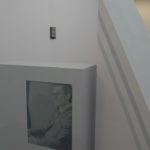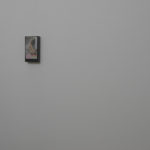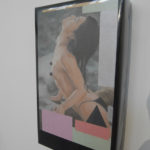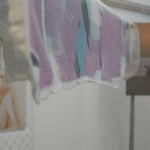Hong Kong, July 10 – August 5, 2016, 3/F Gallery, Cheng Ming Building, New Asia College, CUHK, http://www.artofcuhk.hk/
Sara Lai Cheuk Wah’s ( 黎卓華 ) installation stood out from the other exhibits at the CUHK MFA Graduation Show. At first it just impressed through its ability to express and transmit a certain feeling to the viewer who walked into it. There was no need to read any explanations, but one could feel simply through walking and looking. At closer inspection, the first impression was not a result of chance, but of a very detailed and perfectly executed installation work. The paintings, the objects, the exhibition architecture and arrangement have all been done with such a great attention to detail they seemed seamless. From entering the room, when one had to pass under a large beach sun umbrella, up to the movement around the room and the departure through passing under the umbrella again, every parameter of the exhibition space and every object contained its own reasons for being where it was and having the color it had.
The theme of the exhibition was based on images from an old Penthouse magazine from the 1980’s or 1990’s, playing on a nostalgia and longing for the past. At the same time, a short video clip edited together from advertisements, playing back on a small TV sitting on the metal springs of a mattress interior pointed towards an engagement with the consumer culture aspect connected to the period. There has been a site specific resonance with the prevalent nostalgia and retreat to privacy in Hong Kong, where the past has been golden and the future is unsure. But this only stayed as a very gentle undertone, giving way to a stronger and universal retro-feel that resonated with the vaporwave movement aesthetics – picking up overdue consumer culture aesthetics to cynically deconstruct capitalism. The painting and the installation has been seductive in its perfection and neatness, but it did not stop at being decorative. The individual paintings in the exhibition served as portals into alternative dream-realities.
The whole installation balanced very carefully between the seduction through consumption, as it has been perfected by capitalism, and the child-like innocence of the seduced, who knows s/he is succumbing to a mirage yet nevertheless does accepts this circumstance with enjoyment. It was soaked with the hyper-real emanating from magazine ads, yet the retro-references created a rift with the presence into which doubts and questions could sink.
Lai is by definition a painter, and a painterly sensibility for composition and color palettes could definitely be felt in the installation, but the spatial arrangement, inclusion of objects and the edited video all proved that Lai’s sensibility extends beyond the canvas into the spatiotemporal realm of experience design. There was a visual vocabulary which held the exhibition together, clinging on to multiple reference points and spanning the scale from personal to universal. Furthermore, the deployment of this vocabulary surpassed a verbal description – one had to walk through to experience it.
